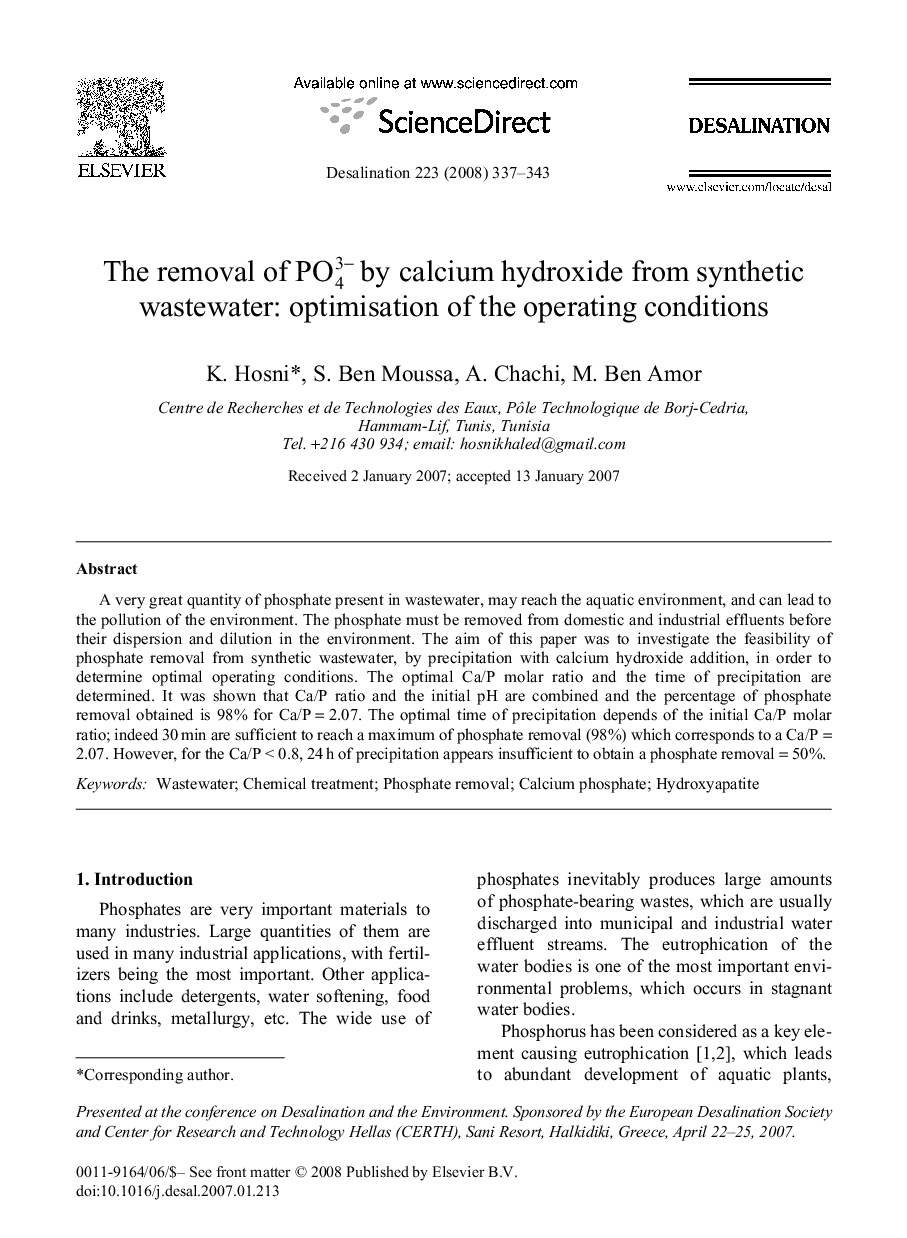| Article ID | Journal | Published Year | Pages | File Type |
|---|---|---|---|---|
| 627580 | Desalination | 2008 | 7 Pages |
A very great quantity of phosphate present in wastewater, may reach the aquatic environment, and can lead to the pollution of the environment. The phosphate must be removed from domestic and industrial effluents before their dispersion and dilution in the environment. The aim of this paper was to investigate the feasibility of phosphate removal from synthetic wastewater, by precipitation with calcium hydroxide addition, in order to determine optimal operating conditions. The optimal Ca/P molar ratio and the time of precipitation are determined. It was shown that Ca/P ratio and the initial pH are combined and the percentage of phosphate removal obtained is 98% for Ca/P = 2.07. The optimal time of precipitation depends of the initial Ca/P molar ratio; indeed 30 min are sufficient to reach a maximum of phosphate removal (98%) which corresponds to a Ca/P = 2.07. However, for the Ca/P < 0.8, 24 h of precipitation appears insufficient to obtain a phosphate removal = 50%.
